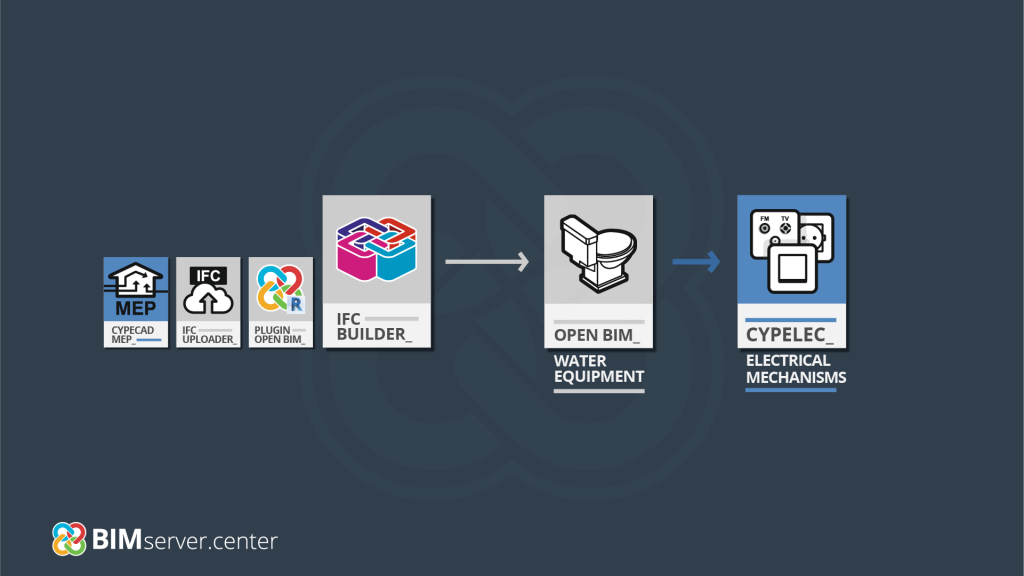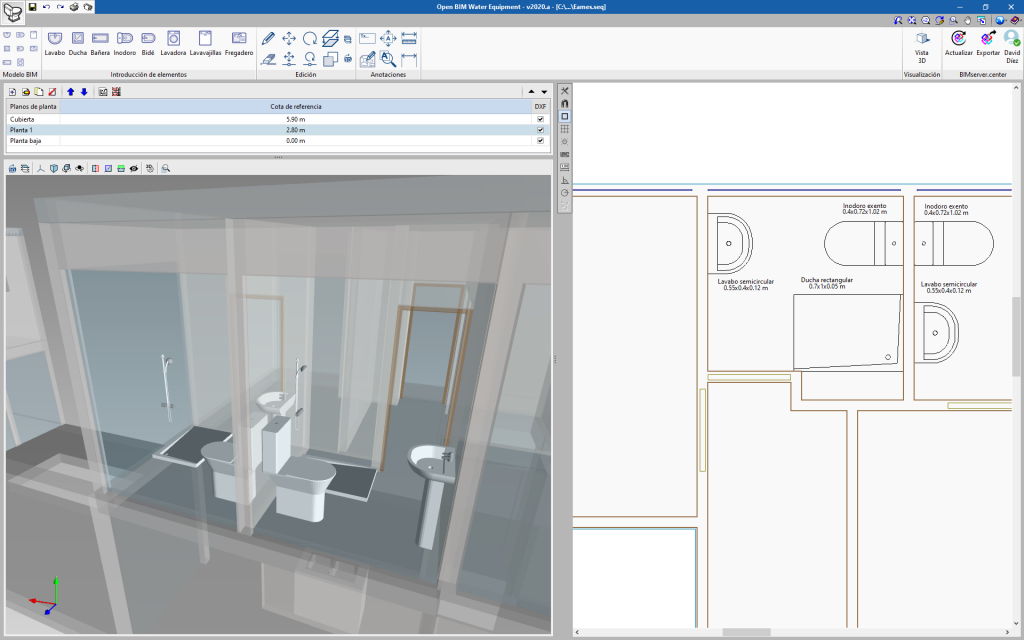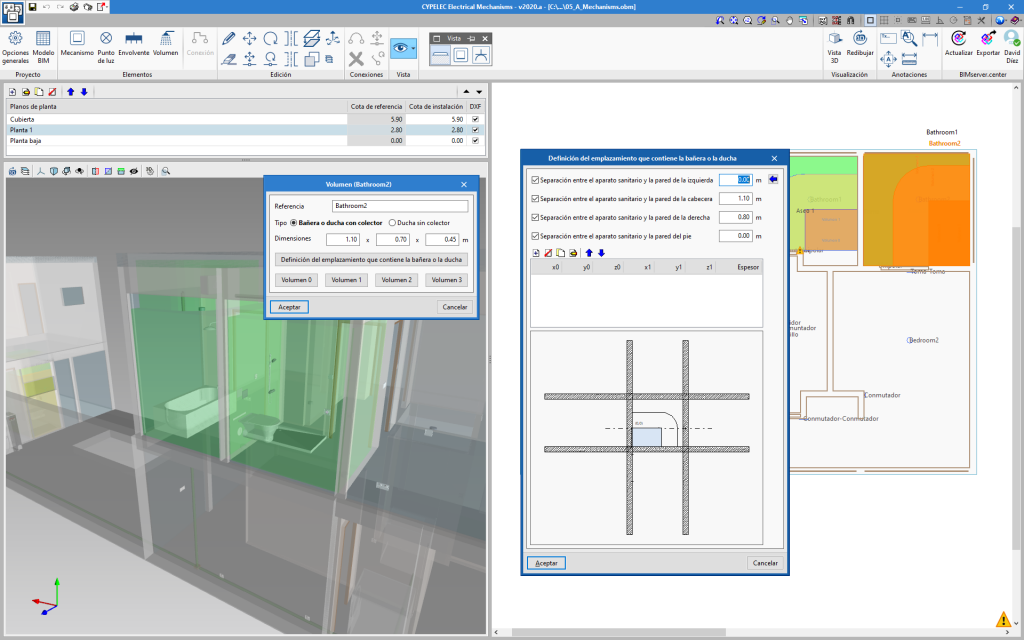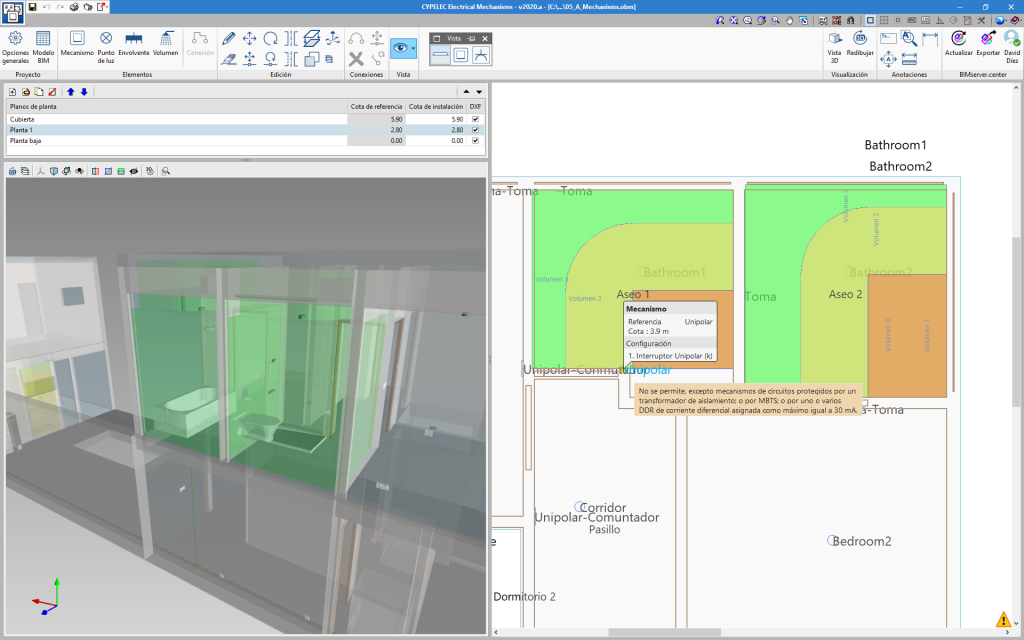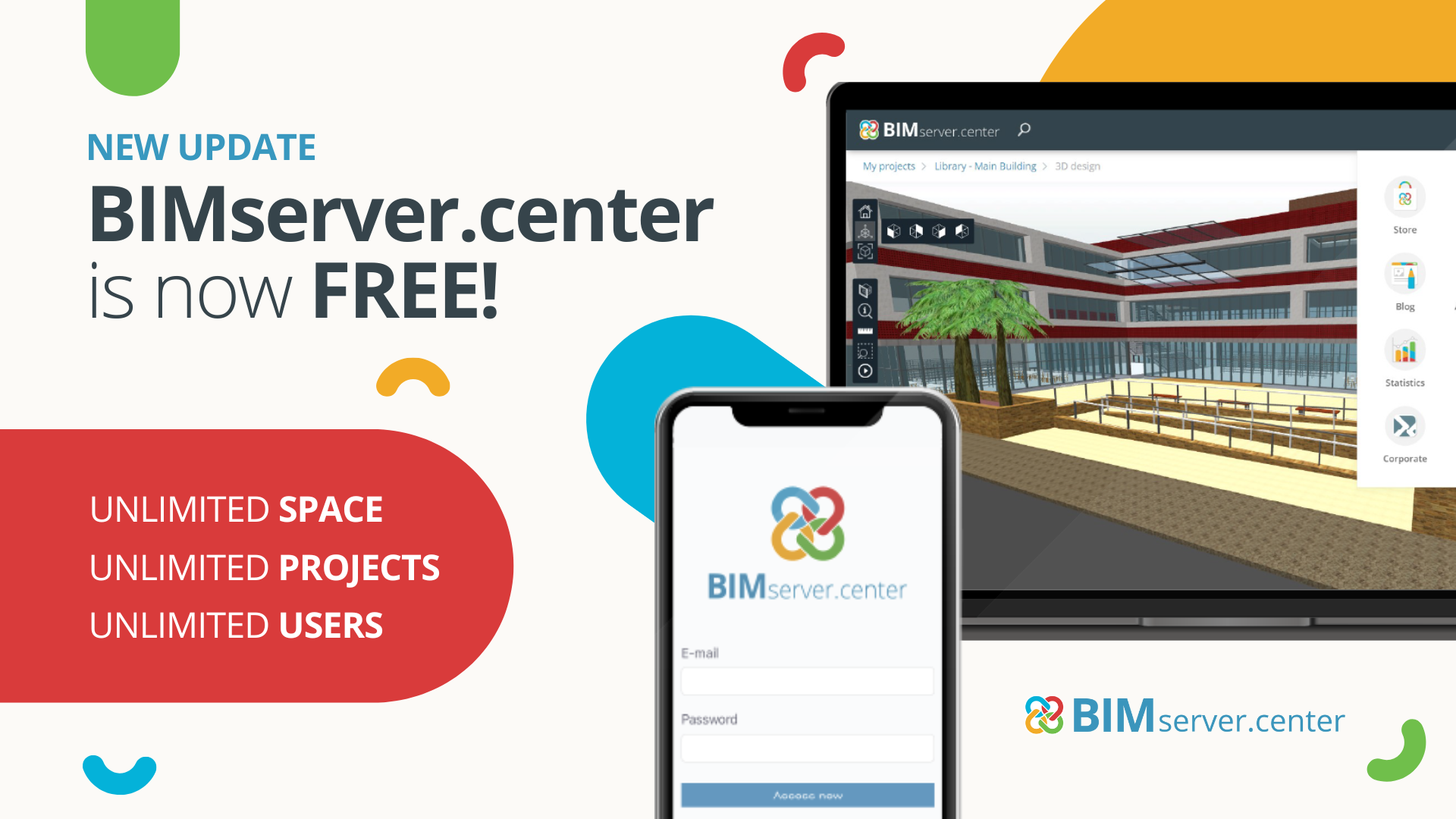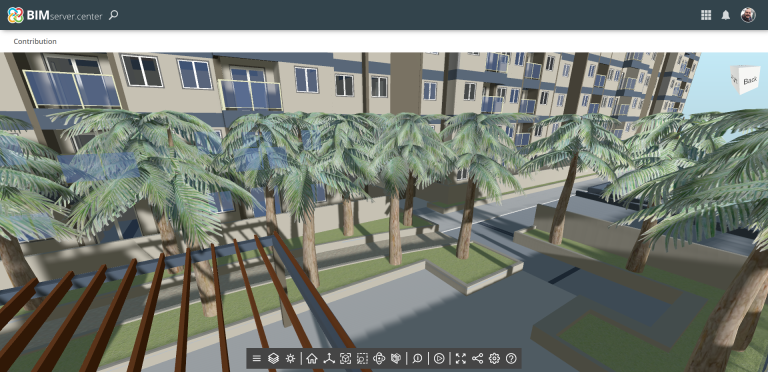In order to take advantage of the benefits of the Open BIM work methodology, the workflow is described below. Starting from the architectural model, the electrical zones are defined in locations that have a bath or a shower, with the aim of choosing and properly installing the wiring devices in order to guarantee the safety of the electrical installations.
Data Input

Distribution of sanitary ware, among which baths and showers are included.
We will start with the building’s architectural model, which already has the corresponding compartmentalised spaces, among which are the bathrooms and toilets. The versatility of BIMserver.center gives us the freedom to start working from IFC Builder, the Open BIM – Revit plug-in, IFC Uploader or CYPECAD MEP.
Additionally, the distribution of the sanitary ware, including baths and showers, is also known inside the bathrooms and toilets. The Open BIM Water Equipment programme allows this distribution to be carried out.
Electrical zones specifications.

Electrical zones specifications
The electrical zones are defined in the International Standard IEC 60364-7-701, and are decisive for the positioning of the wiring devices.
The CYPELEC Electrical Mechanisms programme allows the specifications from the above mentioned standard to be loaded.
In this regard, it should be noted that the international standard defines the zones 0, 1 and 2, organised from the lowest to highest, depending on if the installation of electrical equipment inside the zones is permitted or not.
Geometry of the electrical zones

Geometry of the electrical zones.
The electrical zones depend on the sanitary ware (shower, bath, prefabricated shower cabin...), the geometry of the areas that will contain them, the separation of their different walls, the floor to ceiling height and if there are fixed partition walls or not in the interior. The geometric model provides the location of the toilets and bathrooms and their dimensions. Open BIM Water Equipment provides the location of the sanitary ware. Finally, CYPELEC Electrical Mechanisms processes the information and generates the electrical zones.
The designer can edit the zones and add fixed partition walls that alter the geometry of the electrical zones.
Checking of the wiring devices in the interior of the electrical zones

Checking of the wiring devices in the interior of the electrical zones.
Finally, after having located the different wiring devices inside bathrooms and toilets, CYPELEC Electrical Mechanisms warns when the wiring device is located inside an unauthorised electrical zone, or advises the conditions it should be located in the case that it is permitted.


